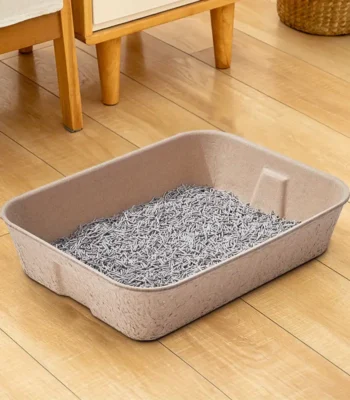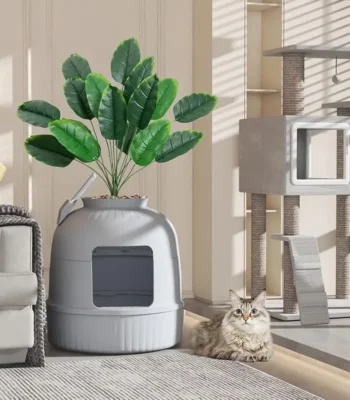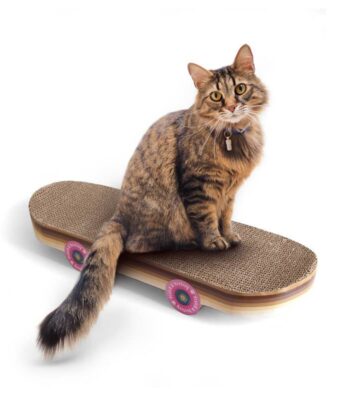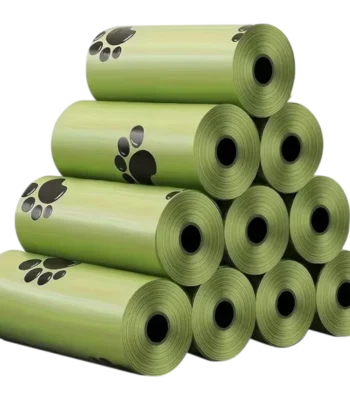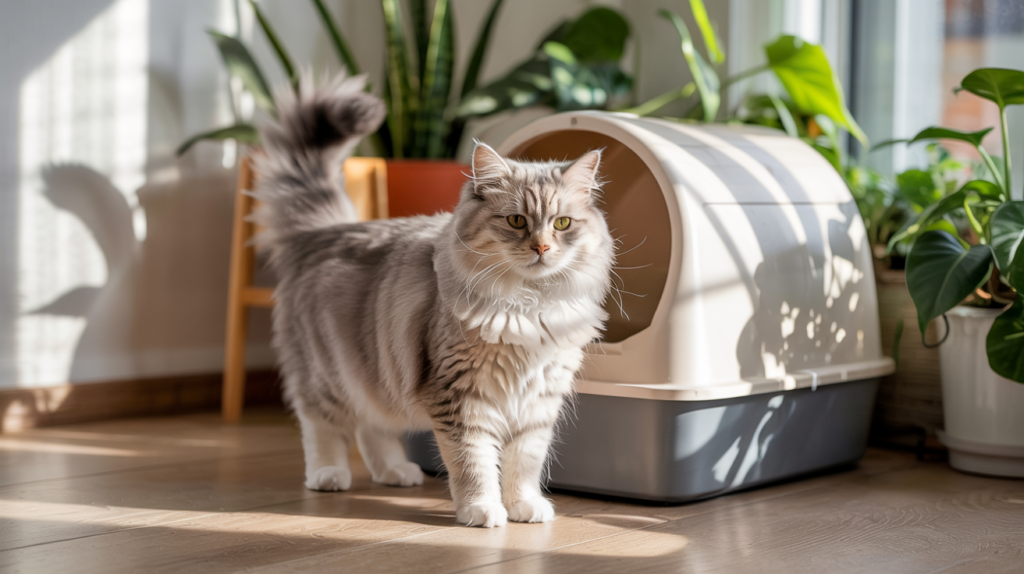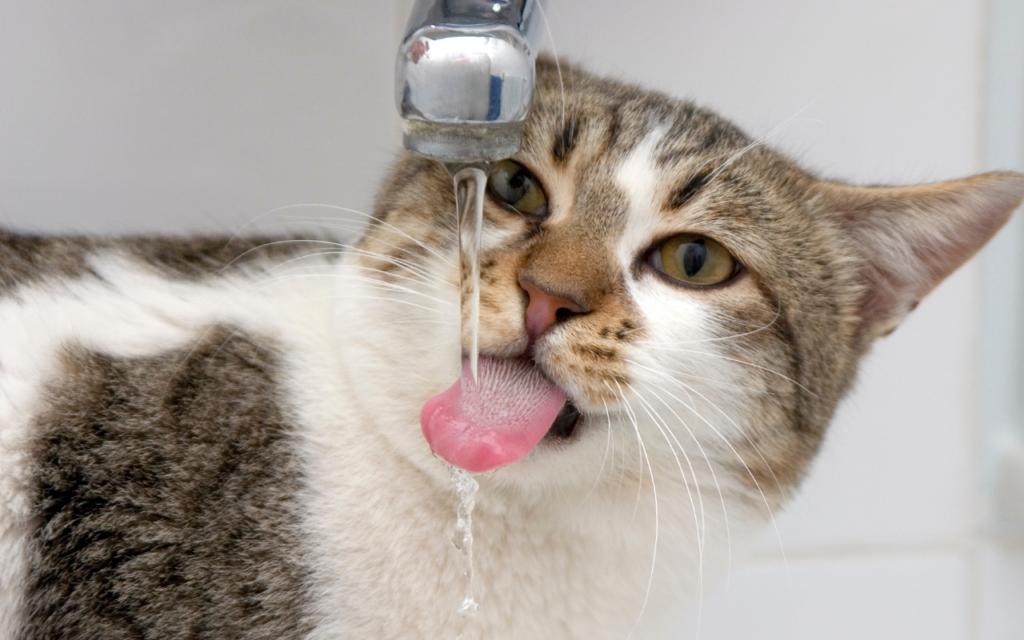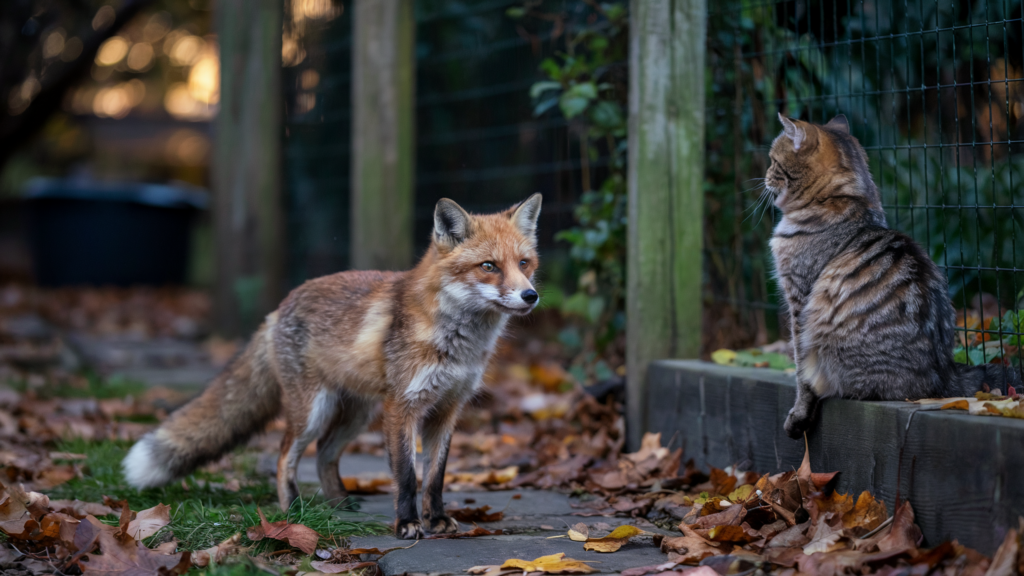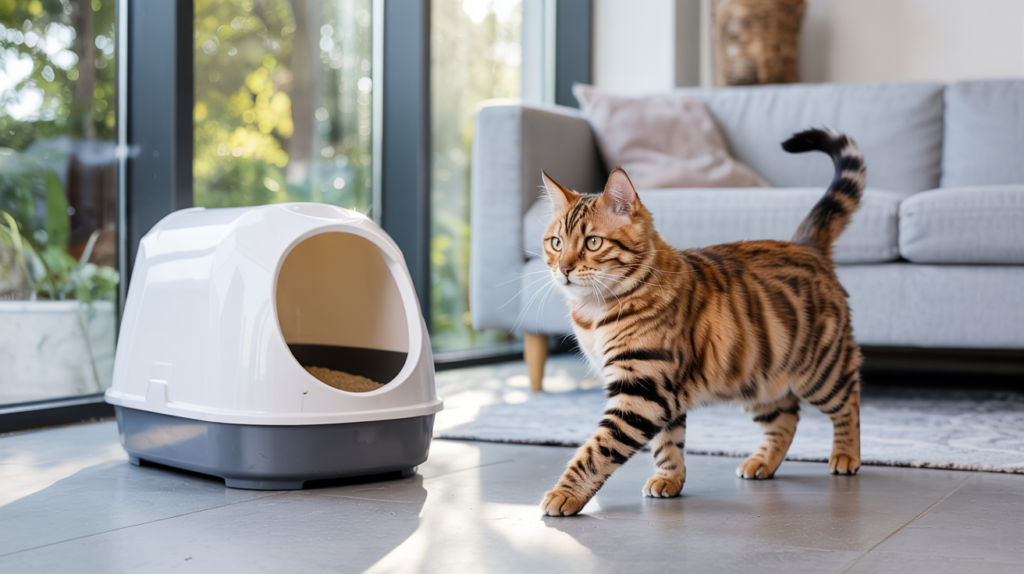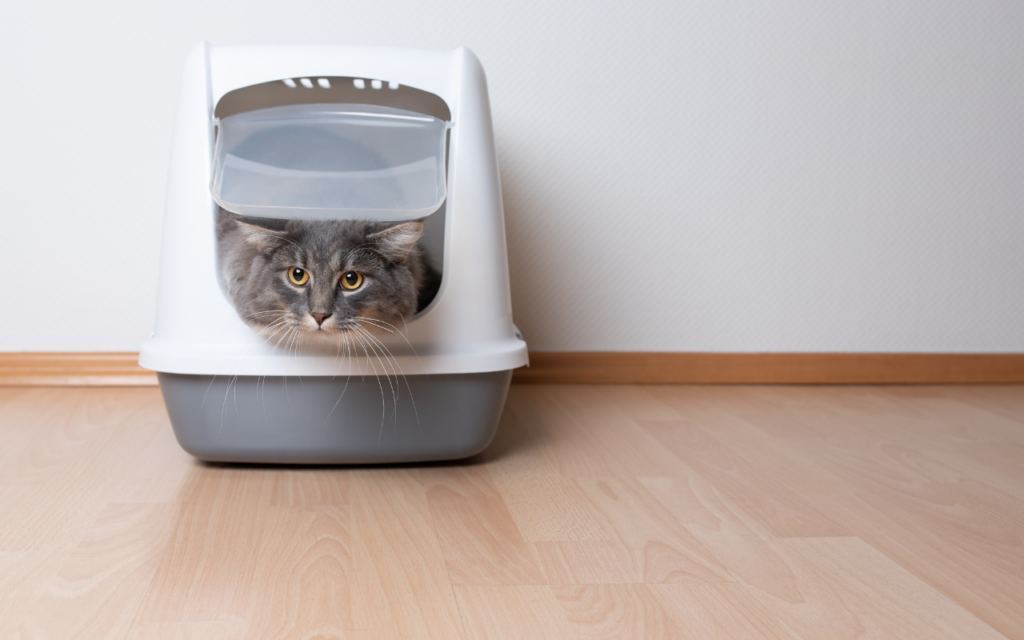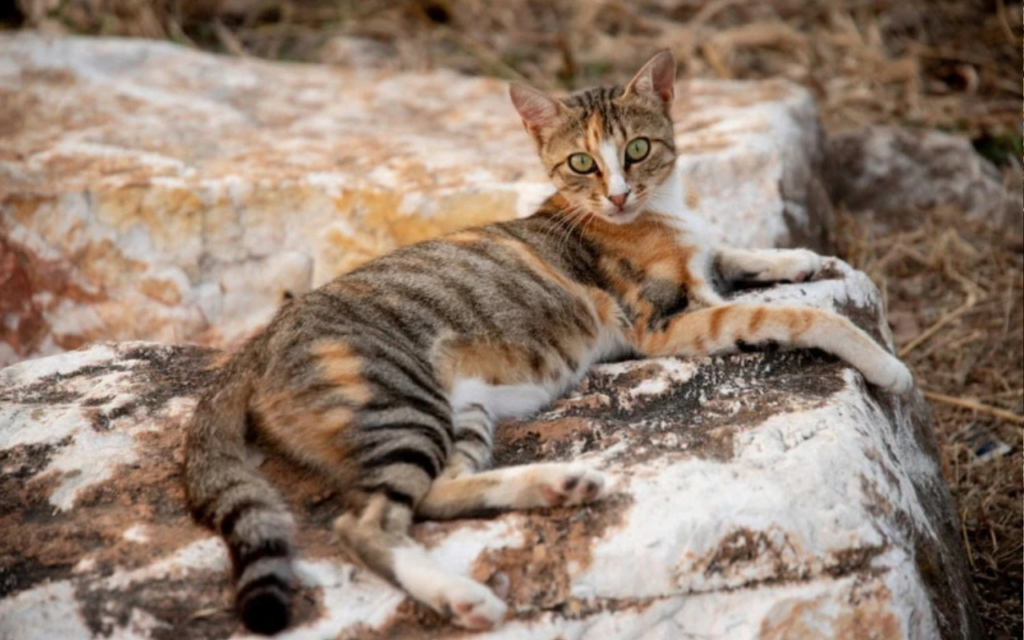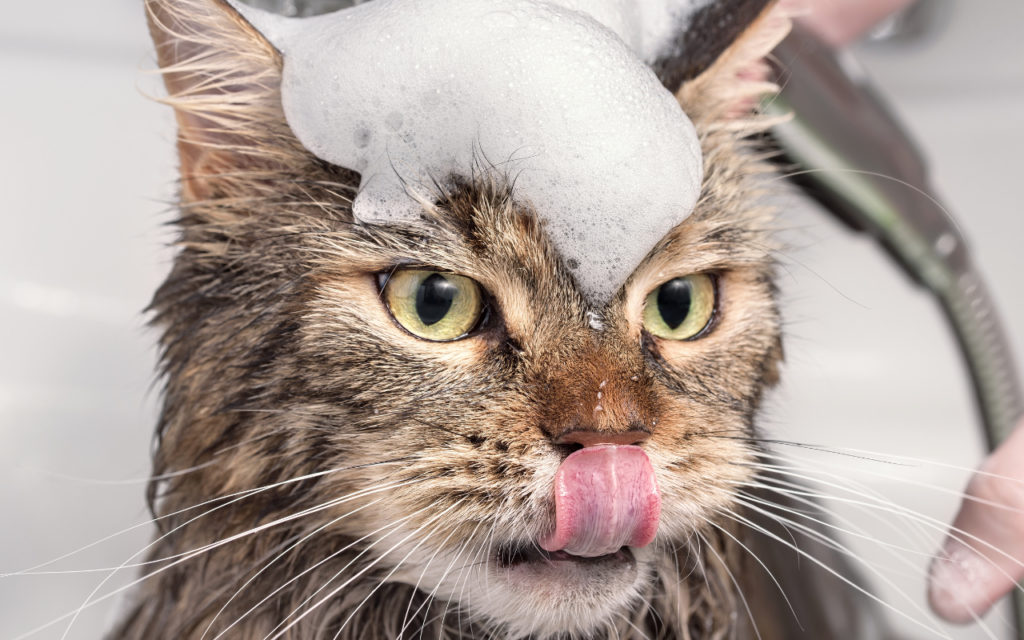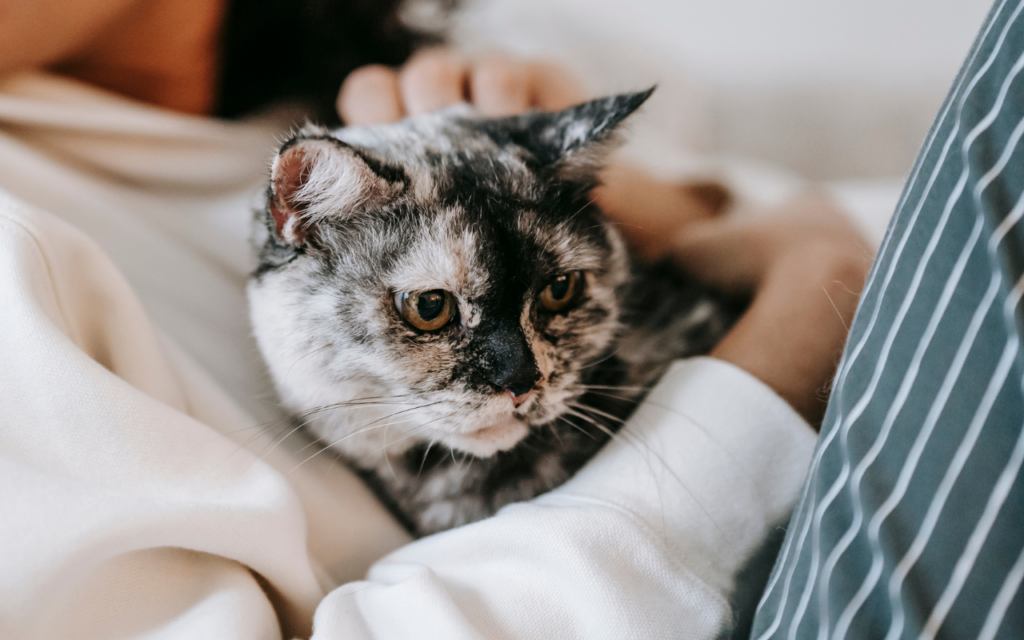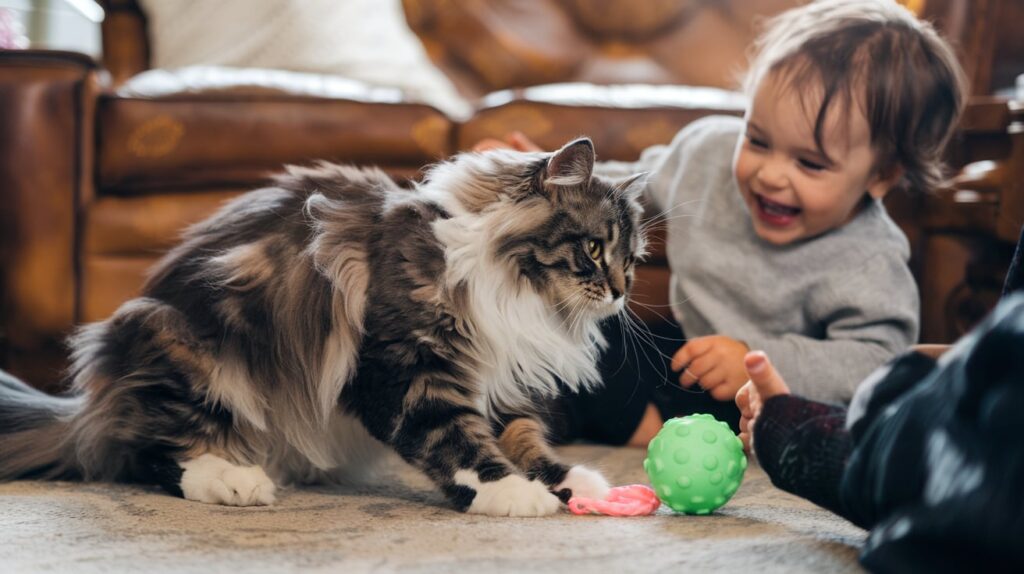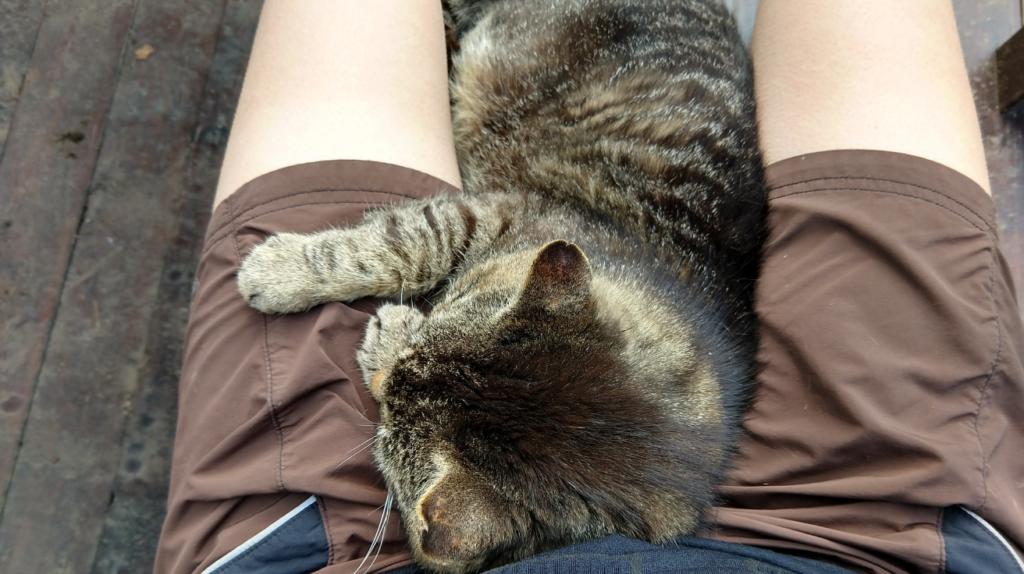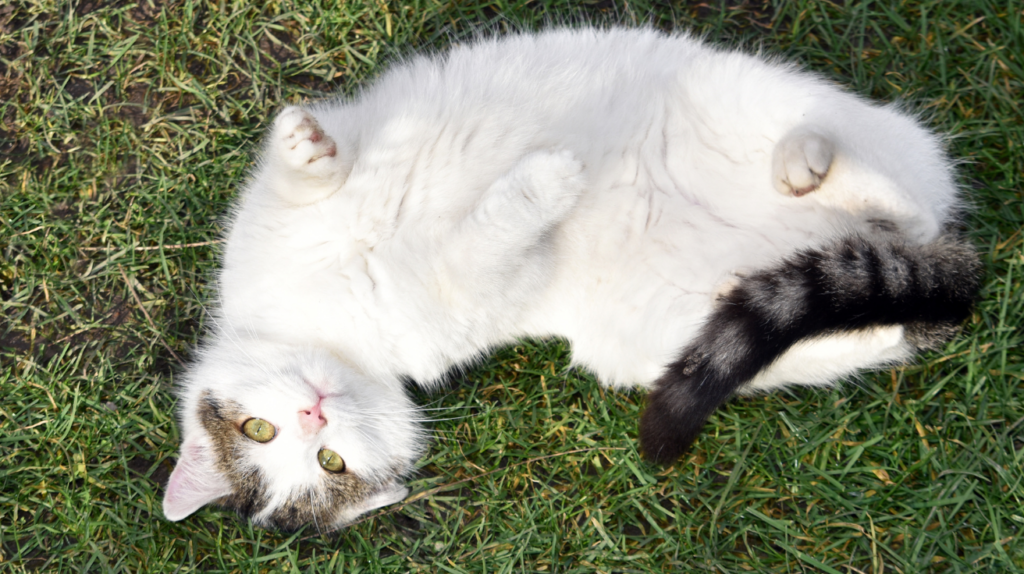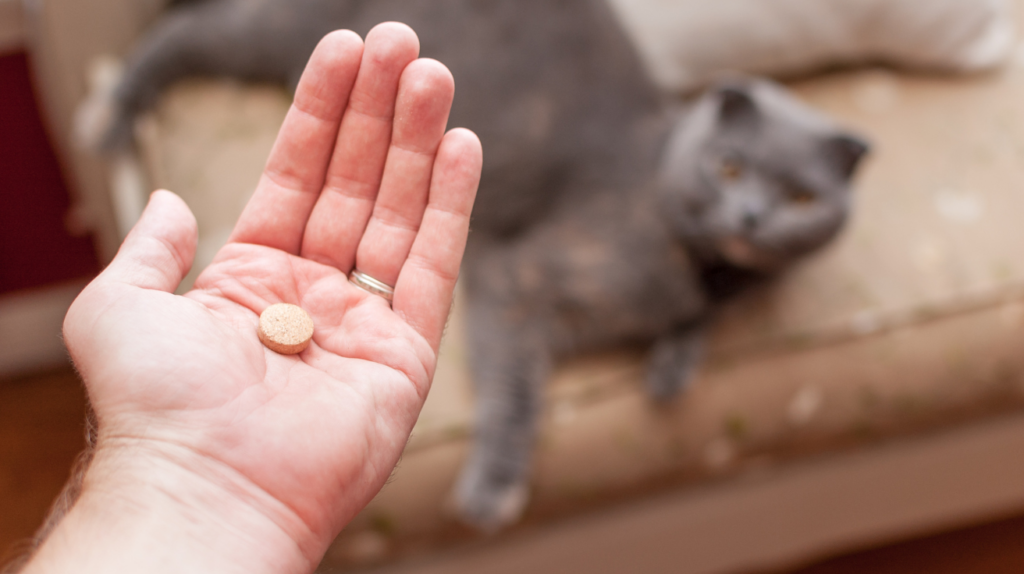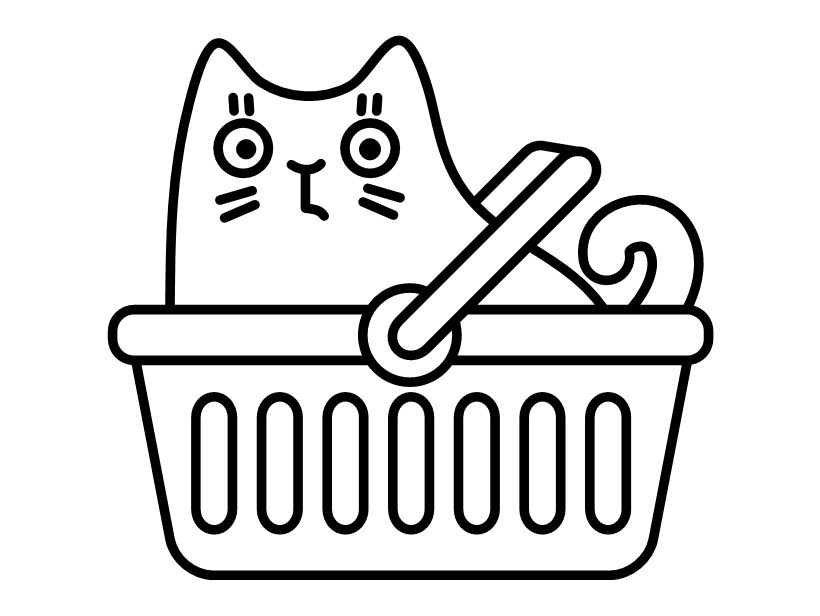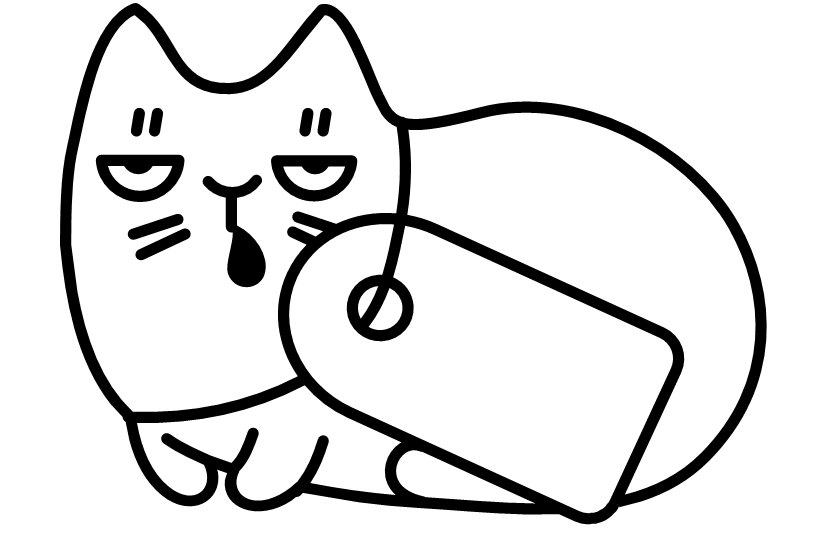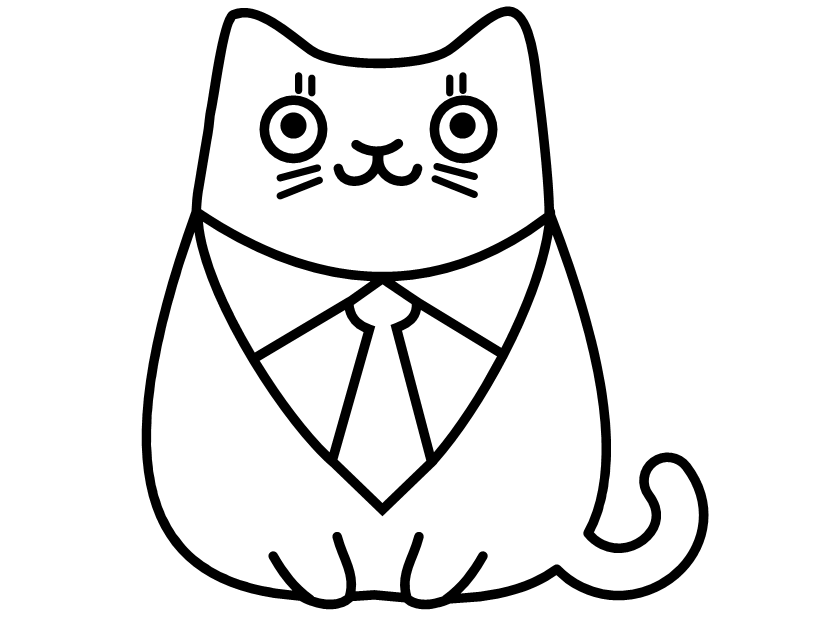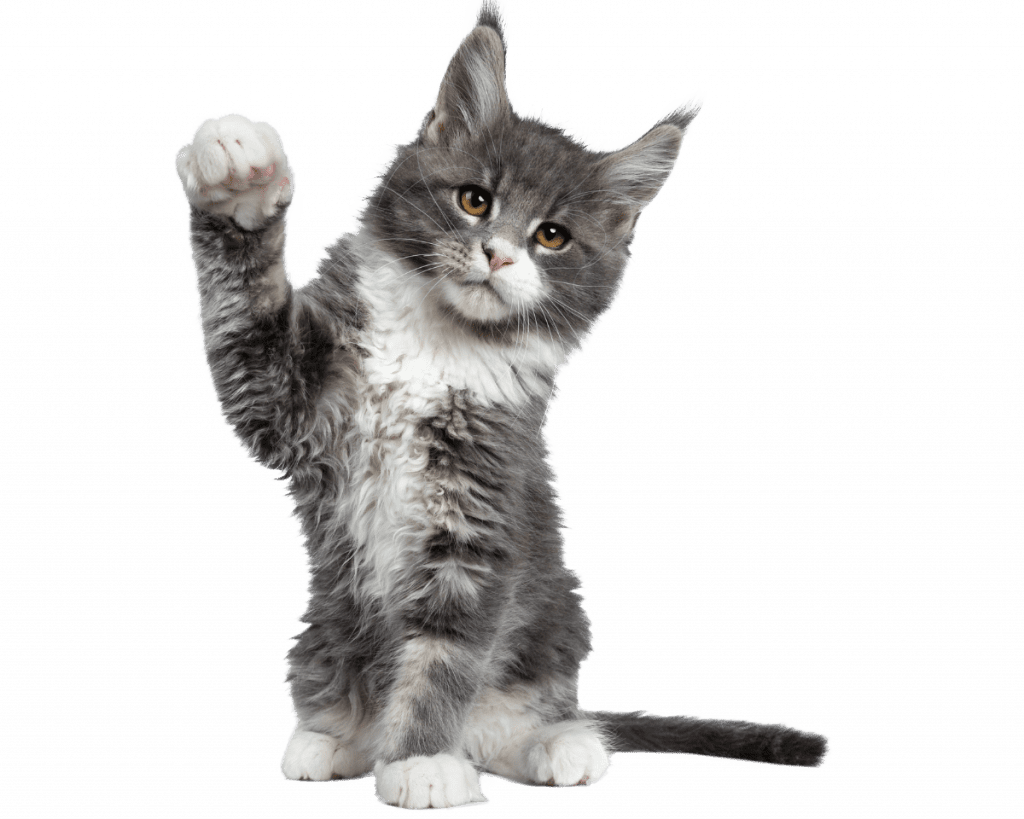Scottish Fold Cat Breed Information
Scottish Fold cats are the feline world’s answer to owls – adorable, round-faced, and utterly captivating. These medium-sized beauties boast a unique feature that sets them apart from other breeds: their distinctively folded ears that would make even the wisest of owls jealous.
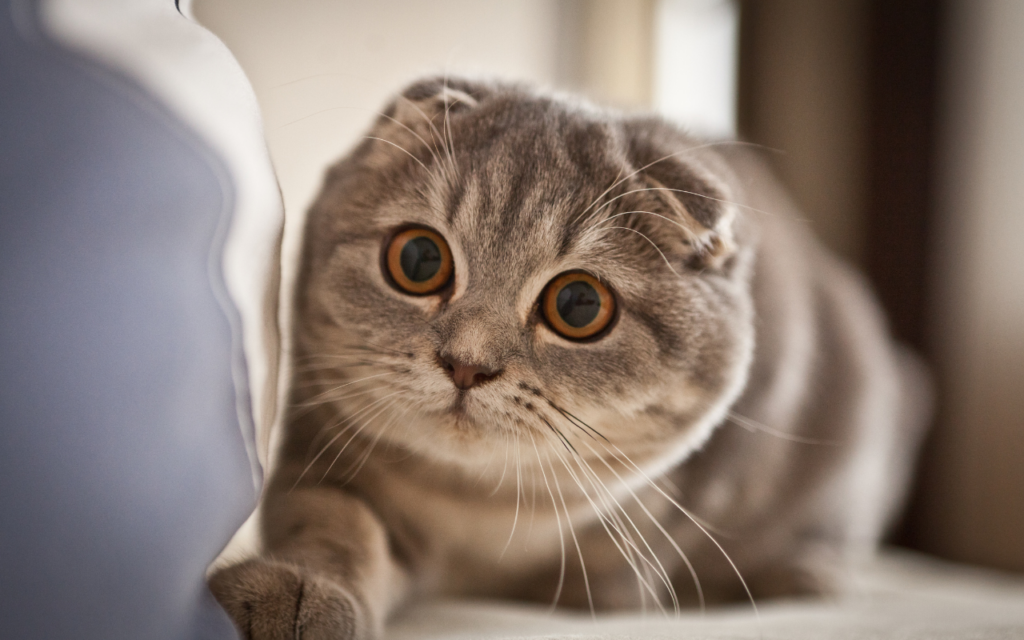
Quick Facts About Scottish Fold Breed
- Short To Medium Haired
- Medium Size
- Medium Grooming Needs
- Moderate Energy Levels
- Medium Shedding
- Low Vocalisation

Table of Contents
Scottish Fold Breed History and Origins
The Scottish Fold’s story began on a Perthshire farm in 1961 when shepherd William Ross discovered a white barn cat named Susie with uniquely folded ears – a true genetic jackpot. These folded ears, passed on to her kittens, sparked the birth of a breed that would soon charm the world.
- Origin: Discovered in Scotland, 1961
- Early Fame: Gained US popularity in the 1970s and recognised by the Cat Fanciers’ Association in 1978
- Genetic Twist: Initially known as “lop-eared” cats, their distinct mutation set them apart
In the early 1970s, British geneticist Oliphant Jackson raised concerns about potential health issues related to the folded ear gene. Despite initial concerns, responsible breeding practices have allowed this breed to flourish, though health monitoring remains key.
Understanding the Scottish Fold Temperament
Scottish Folds are the gentle giants of the feline world, blending unique looks with an even temperament.
- Affectionate & Sweet: They form strong bonds with their family, becoming like living teddy bears
- Intelligent & Playful: Enjoy interactive games and sometimes even a round of fetch
- Adaptable: Perfect for cosy flats or spacious homes, they adjust to various living environments
- Quiet Communicators: They speak in soft chirps and gentle meows, making them ideal for a peaceful household
Their signature “Buddha pose” – sitting with their hind legs stretched out and paws on their belly – adds to their charming, relaxed personality.
Despite their laid-back nature, Scottish Folds are quite intelligent and enjoy puzzle toys and interactive games. They’re not as high-energy as some breeds, but they do appreciate playtime with their human companions. Many Scottish Folds enjoy playing fetch, proving that sometimes cats can indeed be man’s best friend.
Key Characteristics of Scottish Fold Cats
These cats are the cuddly, round-faced charmers of the cat world.
- Size: Medium-sized, weighing between 3-6 kg (6-13 pounds)
- Face & Eyes: Round face with full cheeks and large, expressive eyes that melt hearts
- Distinctive Ears: Their folded ears, caused by a dominant gene, give them an owl-like appearance.
- Coat: Short, dense coat available in a variety of colours and patterns; long-haired variants also exist.
Their most distinctive feature is, of course, their folded ears. Not all Scottish Folds have folded ears (those with straight ears are called Scottish Straights), but when they do, it’s truly a sight to behold. It’s like they’re permanently surprised by how adorable they are!
The folded ear is caused by a dominant gene that affects the cartilage throughout the body, causing the ears to fold forward and downward. The degree of ear folding can vary, with some cats having a single fold and others having a double or triple fold.
Scottish Folds come in a wide variety of colours and patterns, including solid, tabby, tortoiseshell, and colourpoint. Their eyes are typically large and round, adding to their sweet expression. Eye colours can range from gold to green to blue, often complementing their coat colour.
The breed’s body is medium-sized and well-rounded, with a sturdy bone structure. They have a short neck and a well-padded body, giving them a cuddly appearance. Their legs are medium in length, with the hind legs slightly longer than the front, and they have round, firm paws.
Common Scottish Fold Cat Health Issues
While generally healthy, Scottish Folds require careful monitoring due to potential genetic concerns.
- Osteochondrodysplasia: A cartilage and bone development disorder that may lead to arthritis and mobility issues
- Ear Infections: Their folded ears can trap wax and debris, so regular cleaning is essential
- Degenerative Joint Disease: Particularly in the tail, ankles, and knees as they age
- Hypertrophic Cardiomyopathy: A rare heart condition that can affect any cat
Regular vet check-ups, maintaining a healthy weight, and responsible breeding (typically pairing a folded-ear cat with a straight-eared mate) are key to ensuring their well-being.
The folded ear structure can also make Scottish Folds more prone to ear infections and mites. Regular ear cleaning and check-ups are essential to prevent these issues. Some Scottish Folds may also develop degenerative joint disease, particularly in their tail, which can be painful and affect their mobility.
Despite these potential health issues, many Scottish Folds live long, healthy lives with proper care and regular veterinary check-ups. It’s crucial to obtain a Scottish Fold from a reputable breeder who prioritises health and genetic diversity in their breeding program.
Scottish Fold Compatibility with Families and Other Pets
Ideal for families, Scottish Folds adapt easily to a range of households.
- First-Time Owners: Their easy-going nature makes them perfect for cat newbies
- Child & Pet Friendly: With proper socialisation, they interact well with children and other animals
- Adaptable: Thrive in both apartment living and larger homes
- Independent Yet Affectionate: They appreciate company but can entertain themselves
These cats are adaptable and easy-going, making them suitable for a variety of living situations. Whether you’re a single professional or a family of five, a Scottish Fold can fit right in. They’re like the chameleons of the cat world, minus the colour-changing abilities (though their big eyes might change your world).
Their gentle, non-demanding nature means they’re the zen masters of the cat world – making every day a cuddle-worthy day.
Should Scottish Fold's Be Indoor Cats?
Scottish Folds are best kept as indoor cats, ensuring their safety and preserving their unique features.
- Safe & Secure: Indoor living protects them from traffic, predators, and theft
- Window Watchers: They love to observe the outdoors from a cosy perch
- Supervised Outdoor Time: Leash training or a secure “catio” can let them explore safely
Indoor life also helps minimise the risk of ear infections and joint injuries, keeping them happy and healthy.
While some Scottish Folds may enjoy a secure outdoor enclosure or “catio”, they’re generally content to watch the world go by from the comfort of their favourite windowsill. After all, why risk getting their beautiful coat dirty when they can survey their kingdom from indoors?
Scottish Folds are not typically high-energy cats and don’t require large outdoor spaces to be happy. Their gentle nature and lack of strong hunting instincts make them less suited to outdoor living.
Essential Grooming Tips for Scottish Fold Cats
Their grooming needs are relatively low, but regular maintenance is crucial.
- Brushing: Weekly brushing removes loose fur and distributes natural oils; increase frequency during shedding seasons
- Ear Care: Clean their unique folded ears weekly with a pet-safe solution to prevent infections
- Nail & Dental Care: Regular nail trims and teeth brushing (using cat-safe toothpaste) help maintain overall health
- Bonding Time: Grooming is a wonderful opportunity to bond with your feline friend while keeping them looking their best
Dental care is often overlooked in cats, but it’s crucial for maintaining overall health. Get your Scottish Fold used to having their teeth brushed from a young age, using cat-safe toothpaste and a soft brush. Regular dental check-ups with your vet are also important.
Nail trimming should be done every few weeks. If you’re not comfortable doing this yourself, a groomer or vet can help. It’s also a good idea to provide a scratching post to help your Scottish Fold maintain their own nails and satisfy their natural scratching instincts.
Proper Nutrition and Feeding for Scottish Fold
Feeding a Scottish Fold is about balancing quality with portion control.
- High-Quality Diet: Use protein-rich cat food to support their carnivorous needs
- Portion Control: Avoid obesity with measured meals rather than free-feeding
- Hydration: Fresh water is essential; wet food can boost water intake and support urinary health
- Joint Support: Consider foods enriched with omega-3 fatty acids, glucosamine, and chondroitin to support joint health
Scottish Folds have no specific dietary requirements different from other cat breeds, but due to their potential for joint issues, a diet that supports bone and joint health can be beneficial. Foods rich in omega-3 fatty acids, glucosamine, and chondroitin can help maintain joint health.
As with all cats, a diet high in animal protein is essential. Look for cat foods where meat is the first ingredient. While they can digest some carbohydrates, their diet should be primarily protein-based to support their carnivorous needs.
Scottish Folds can be prone to obesity, especially as they age and become less active. It’s important to measure their food and feed them controlled portions rather than free-feeding.
Consult your vet for dietary advice tailored to your cat’s age, weight, and activity level.
Interesting Facts About Scottish Fold Cats
- Owl-Like Looks: Their folded ears give them a distinctive, owl-inspired appearance
- Not All Folded: Kittens may develop folds at 3-4 weeks old; straight-eared kittens are known as Scottish Straights
- Celebrity Fans: Loved by figures such as Taylor Swift and Ed Sheeran
- Unique Sitting Style: Their “Buddha pose” is as adorable as it is iconic
- Genetic Considerations: Breeding two folded-ear cats can increase health risks, so responsible breeding is key
Scottish Folds have made appearances in popular culture, featuring in advertisements and even inspiring the character of Maru in the Japanese manga “Neko Atsume”. Their unique appearance and sweet nature have made them popular subjects for social media accounts and cat-themed merchandise.
Scottish Fold Breed FAQ's
Are Scottish Folds good for first-time cat owners?
Yes, their affectionate and easy-going nature makes them ideal for beginners. They adapt well to home life and require minimal fuss compared to more high-energy breeds.
Do Scottish Folds shed a lot?
They have moderate shedding, which can be managed with regular brushing. Short-haired varieties typically shed less than long-haired ones.
Are Scottish Folds affectionate?
Absolutely. They are known for forming strong bonds with their family, though they’re not typically lap cats. They enjoy being near their loved ones and show affection in subtle, endearing ways.
How long do Scottish Folds live?
With proper care, they typically live 11-14 years, and some may reach their late teens. Regular vet check-ups and a healthy lifestyle are key.
Are Scottish Folds expensive?
They can be, especially from reputable breeders. Prices generally range from £500 to £1,500, depending on pedigree, coat colour, and whether the cat has folded ears.
Do all Scottish Fold kittens have folded ears?
No, not every kitten is born with folded ears. The folding usually begins around 3-4 weeks if they carry the gene. Kittens without folds are known as Scottish Straights.
Similar Breeds
-
British Shorthair: Shares the round face and sweet expression, but without the folded ears. They have a similar easy-going temperament.
-
American Curl: Another breed with distinctive ears, but curled back instead of folded forward. They tend to be more active than Scottish Folds.
-
Exotic Shorthair: Similar in body type and temperament, but with a flat face. They’re often described as the short-haired version of the Persian.
-
Manx: Shares the round body shape, but is known for being tailless. Manx cats tend to be more active and playful than Scottish Folds.
-
Highland Fold: The long-haired version of the Scottish Fold. They have the same temperament but require more grooming due to their longer coat.
Scottish Fold cats offer a purrfect blend of unique looks and gentle nature. Their owl-like appearance, combined with a sweet, adaptable temperament, makes them excellent companions for a variety of households. Whether you’re a first-time owner or a seasoned cat enthusiast, these cats provide endless charm and love – ensuring every day is filled with plenty of purrs and the occasional cat pun.
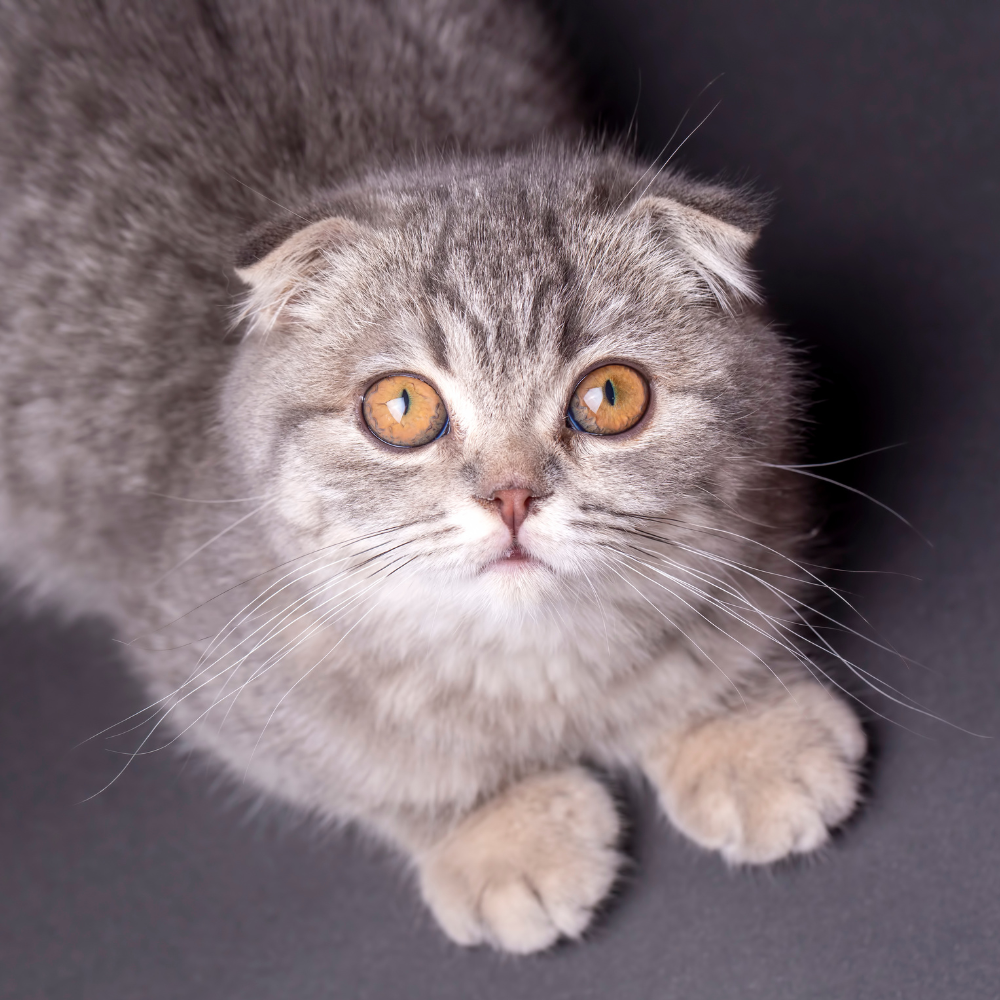
Cat mad
The team at Cat Mad are lifelong cat enthusiasts and regularly give cats loving homes through fostering and adoption. With over 50 years of combined hands-on experience caring for cats of all breeds and temperaments, we share our knowledge and insights to help cat owners provide the best possible care for their furry friends.
Cat mad
The team at Cat Mad are lifelong cat enthusiasts and regularly give cats loving homes through fostering and adoption. With over 50 years of combined hands-on experience caring for cats of all breeds and temperaments, we share our knowledge and insights to help cat owners provide the best possible care for their furry friends.
Latest Cat Mad Blogs
The Ultimate Guide to Keeping Your Cat Hydrated: Tips for Every Situation
-
Posted by
 Cat Mad
Cat Mad
- 0 comments
Do Foxes Attack Cats? What Every Cat Owner Needs to Know
-
Posted by
 Cat Mad
Cat Mad
- 0 comments
How to Stop Litter Tray Smelling: Quick Guide
-
Posted by
 Cat Mad
Cat Mad
- 0 comments
Litter Trays for Two Cats: How Many & Placement Tips
-
Posted by
 Cat Mad
Cat Mad
- 0 comments
World’s Rarest Cat Breeds in 2025
-
Posted by
 Cat Mad
Cat Mad
- 0 comments
Splash Happy: Cat Breeds That Actually Love Water
-
Posted by
 Cat Mad
Cat Mad
- 0 comments
Most Cuddly Cat Breed? Top 7 Cuddliest Cat Breeds
-
Posted by
 Cat Mad
Cat Mad
- 0 comments
What Cats Are Child-Friendly? 8 Child Friendly Breeds
-
Posted by
 Cat Mad
Cat Mad
- 0 comments
Cat Sleeping on You? Reasons, Benefits, and What It Means
-
Posted by
 Cat Mad
Cat Mad
How Do Cats Show Love? 15 Affectionate Signs
-
Posted by
 Cat Mad
Cat Mad
Can Indoor Cats Get Worms: Symptoms, Treatment & Prevention
-
Posted by
 Cat Mad
Cat Mad

